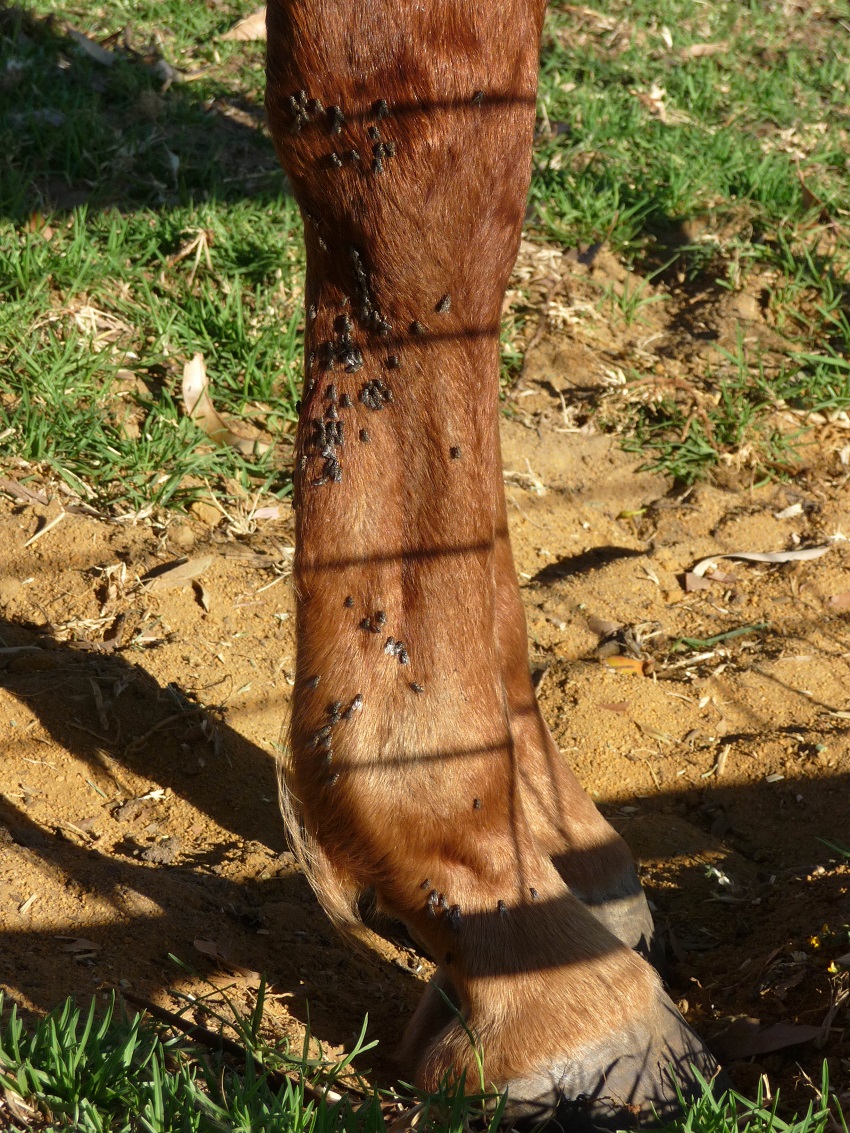
Horticulture growers and livestock producers along the Swan Coastal Plain, north and south of Perth, are reminded to take action to minimise the build up of stable fly numbers.
There have been increased reports of stable flies in numerous areas – particularly from the Gingin Shire – due to unseasonably wet conditions over winter and spring that enabled larval developmental sites to stay active for longer.
Stable fly is primarily a pest of livestock, especially cattle and horses, while it also affects humans, dogs and other animal pets.
The pest inflicts a painful bite and animals become agitated and can lose condition trying to avoid the flies.
The Department of Primary Industries and Regional Development (DPIRD) has been working closely with Local Government Authorities, training rangers to identify larvae breeding sites and inform landholders about appropriate measures to minimise fly breeding environments.
Stable fly is a declared pest under the Biosecurity and Agriculture Management (BAM) Act 2007.
The Stable Fly Management Plan 2019 was developed to assist stakeholders to manage the pest across 14 designated local government areas, from Capel to Chittering.
DPIRD senior research officer David Cook said stable fly management was a shared responsibility between landholders, local government and the department.
The department held a training day late last year with local government officers and rangers at Gingin to improve stable fly detection and discuss appropriate management strategies and landholder obligations under the BAM Act.
Dr Cook advised the key to managing stable flies effectively was to remove potential breeding sites.
“It is important to get rid of rotting plant material, ageing animal manures or a combination of the two, rather than trying to control them on the affected animals,” he said.
“This includes burying vegetable crop residues and reject produce soon after harvest and then compacting the soil above the residues using a land roller.”
The Stable Fly Management Plan 2019 allows for the use of poultry manure, provided it has been appropriately composted or treated with either sodium borate or calcium cyanamide to prevent the pest breeding.
More information is available in the management plan or from the DPIRD website, with regards to appropriate composting methods, or contact Local Government Authorities.
Dr Cook said livestock owners should also employ good on-farm hygiene.
“If feeding waste vegetables to livestock, do so in long thin lines or in a trough or box to prevent mixing with the soil, clean up spilt grain and clean animal enclosures daily,” he said.
“Other measures include collecting manure or soiled straw or litter from animal enclosures and covering animal feed and bedding waste with a fly-proof barrier and keeping it completely dry with a tarp or plastic sheet.
“Together, these measures will prevent the stable fly population from building up and biting companion animals, livestock and humans.”
Landholders are encouraged to consult the department’s website or their local government representative to find out how best to mitigate stable fly on their property.
DPIRD’s website has a link to the Stable Fly Management Plan 2019, as well as a factsheet about how best to store hay to prevent stable fly and information on control measures and surveillance advice. For more information visit www.agric.wa.gov.au and search for ‘stable fly’.
Reports of stable fly bites to livestock, companion animals and humans can be directed to DPIRD via its MyPestGuide Reporter app or calling the department’s Pest and Disease Information Service on (08) 9368 3080.
Reports can also be made via the Stable Fly Action Group’s website www.stableflyactiongroup.org.au.
Picture caption: DPIRD reminds landholders on the Swan Coastal Plain to take evasive action to mitigate the risk of stable fly, which has a nasty bite.
Media contacts:
Megan Broad/Katrina Bowers, media liaison +61 (0)8 9368 3937


